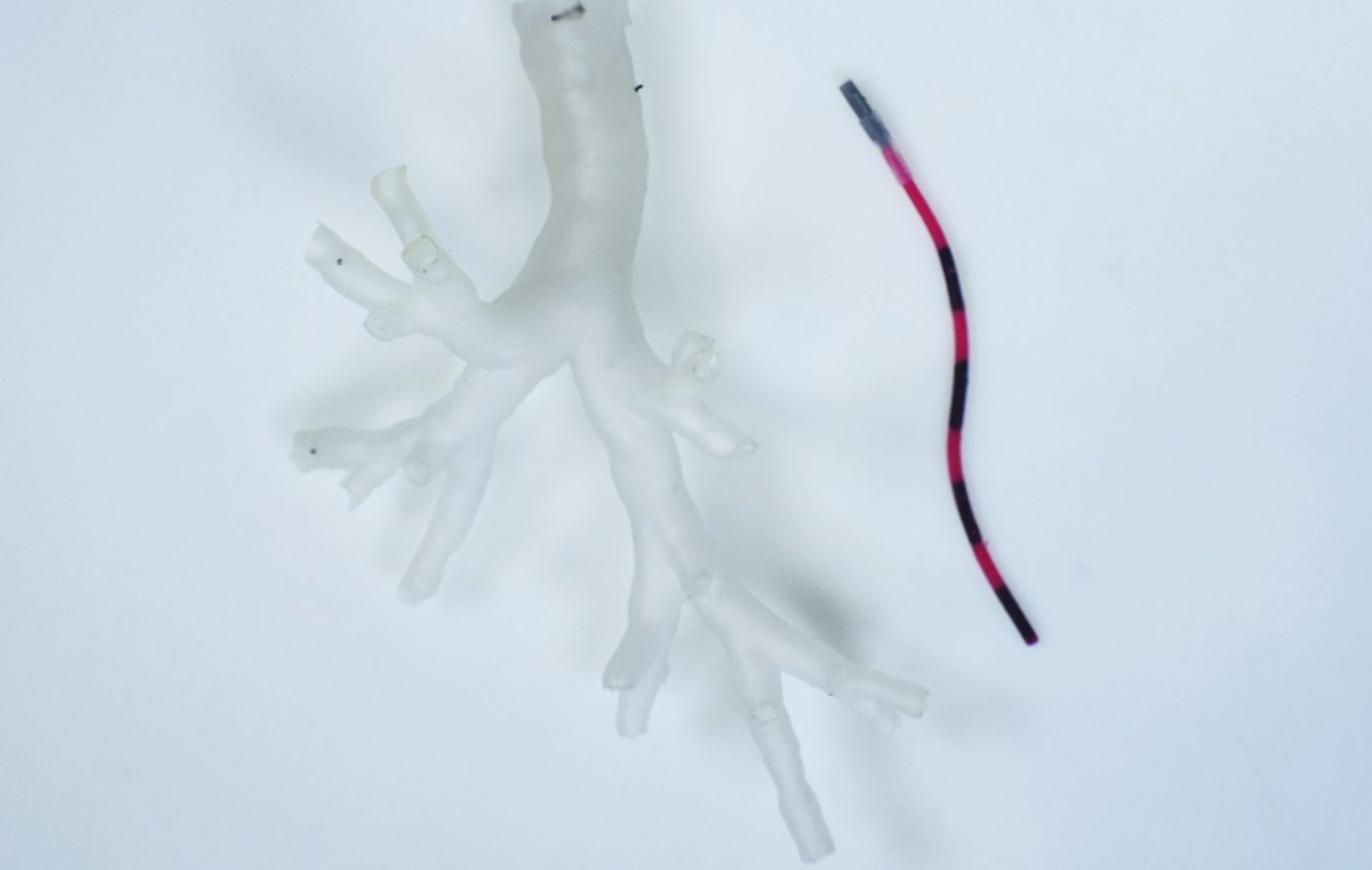Thin and cleverly controlled: Researchers have developed a probe system that can penetrate the lungs’ delicate ramifications. The “tentacle” is only two millimeters wide and is automatically controlled from the outside by magnetic forces emanating from the moving robotic arms. Scientists say the system, which is now being further tested, could make it possible to reach deeper areas of the lungs than before in order to take tissue samples or perform treatments.
Endoscopes and catheters, and sensor systems that are inserted into the body from the outside, have greatly advanced the possibilities for diagnosing and treating various diseases in recent decades. In the case of the lungs, the procedure currently in use is called a bronchoscopy. A flexible, tubular instrument about 3.5 to 4 millimeters in diameter is inserted through the nose or mouth into the bronchus of an anesthetized patient. However, due to its size, the bronchoscope can only penetrate the upper levels of the bronchial tree. To go deeper, a catheter or fine tube is inserted through the bronchoscope and eventually into the tiny tubes of the lungs.
Target finer areas
These sensors are only about 2 millimeters in diameter. But with previous manual control techniques, it could only be directed to a limited extent through the branching bronchial system, meaning some areas were still inaccessible. In addition, X-ray examinations are often required during the procedure, which can be another technical challenge for medical staff. So there is potential to improve catheter and endoscopic technology. Scientists led by Pietro Valdastri from the University of Leeds are dedicating themselves to this research field. Specifically, they are working to develop systems that are more maneuverable, more accurate, more manageable, and require less effort.
This is how the concept of catheters, which they call “magnetic probes”, appeared. This structure consists of interconnected cylindrical sections, each two millimeters in diameter. The material is a soft flexible plastic that gives the tentacle tremendous flexibility as well as segmentation. In order to be able to control their movements from a distance, magnetic particles are incorporated into the material. Thus the sections can be affected independently of each other by external magnetic fields. The result is a highly flexible structure that bends like a tentacle and is small enough not to catch anatomical structures in the lungs, writes the University of Leeds.
Remote maneuverability
The palpator is under the influence of magnetic fields emanating from two robotic arms that move with precise motor control of the patient. They cause the catheter to change direction, allowing the probe to maneuver as it slowly advances to the location of the suspicious spot in the lungs. However, this does not happen manually, but completely automatically: the path through the bronchial tree is mapped based on previous scans of the patient’s lungs and then programmed into the robot system. “Thanks to our independent magnetic guidance system, the patient does not need an X-ray during the procedure,” Valdastri says.
So far, the researchers have only provided a “proof of concept”: they’ve demonstrated the primary function of their concept through lab tests: they’ve successfully guided a tentacle through a 3D replica of a bronchial tree modeled with anatomical data. Therefore development work is still required before it can be used in clinical practice. In the next stage, the team now plans to investigate the system’s performance in navigating the lungs of a cadaver. The University of Leeds writes that after further trials, the ‘magnetic tentacle’ technology could begin to benefit patients for the first time in a few years.
This could represent an important advance, Valdastri asserts: “Magnetic catheters just two millimeters wide and whose shape can be magnetically controlled to adapt to the bronchial anatomy could reach most areas of the lung and would be an important clinical tool for screening and treating potential lung cancer and other lung diseases.” , sums up the world.
source: University of Leeds

“Alcohol buff. Troublemaker. Introvert. Student. Social media lover. Web ninja. Bacon fan. Reader.”







More Stories
This is how our brain chooses what information it will remember in the long term
Up to 100 pilot whales stranded in Western Australia – Science
Huge radiation explosion from a magnetar – forschung.de